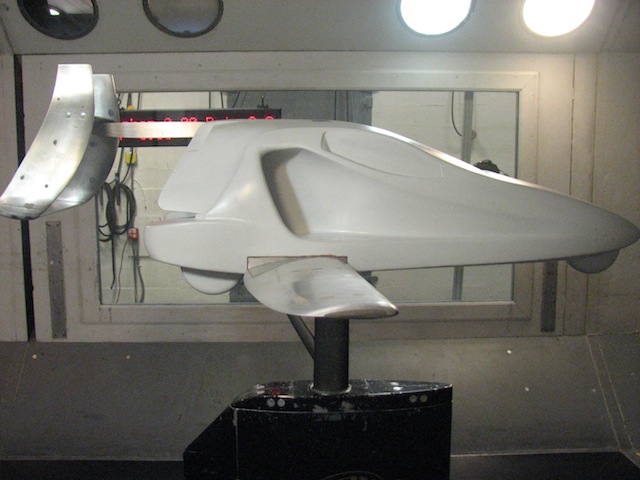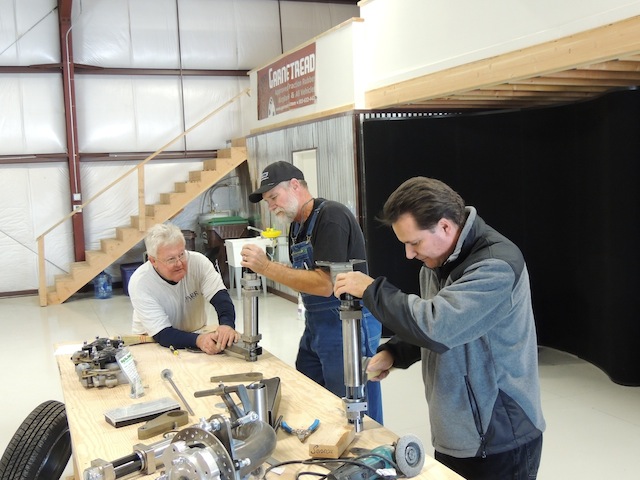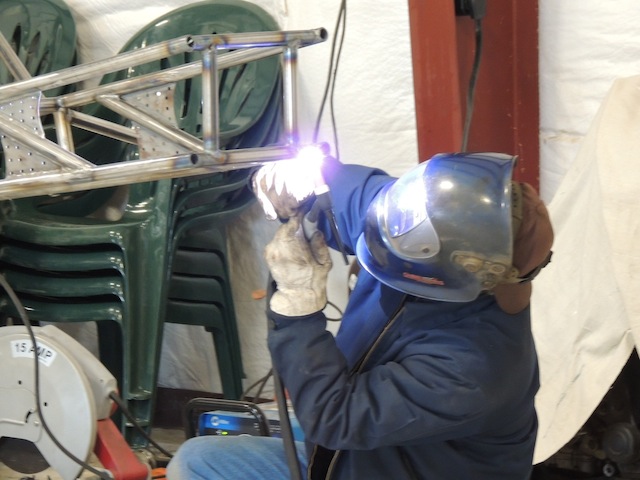You may have heard mention of the wind tunnel model that Samson tested in the University of Washington wind tunnel recently. I thought I might show more photos of that model and process, as it was certainly an experience. The wind tunnel staff were well trained and in control of every aspect. It was very nice to work with them, and we found that they like to work just as fast as we do! With Willem Anemaat from DAR Corp organizing the test parameters, we were able to accomplish over 110 separate tests in the span of two days. Granted, we put in 10+ hour days, but that is still a very respectable number of tests.
What we took away from this testing was that the lift by the wings is augmented by lift from the body – so much so that this became an additional area of aeronautical design that we are still working through. The body wanted to keep flying, and even produce more lift, the higher the nose was pointed. The wings will produce lift up to ~15 degrees pitch up before they stop producing maximum lift, and the lift from the wings drops off significantly past that point. The body kept producing more and more lift, up to the maximum of 30 degrees pitch up that we were able to test. The good part of this is that we feel the lift generated by the body may soften the onset of wing stall (when the wings start to lose maximum lift).
The part we are dealing with is how to best increase tail efficiency so that as the body takes on more of the lift past the point where the wings start losing the ability to produce lift (wing stall), the vehicle remains easily controllable. The other option is to use a stability augmentation system such as Cirrus and many other certified aircraft use, so that the pilot is kept within the region of controllable flight and can’t push the vehicle past the limits, no matter how appealing it might seem.
As this is sorted out, we are still making progress on the suspension, steering, and other components. Above we have Ron Burch, Don Lindsey and Sam Bousfield (left to right) working on the torsion bar suspension cartridges for the rear wheels. These units, although a bit heavier than the ultimate design we would use, are designed to work as suspension units without a shock absorber. This could save us more than twenty pounds, as we can mount the torsion suspension on the existing wing hinge beam. This would remove the structure required to mount a shock absorber, plus the weight of the shock absorber itself.
The torsion bars are being mounted to the steel tube frame ground prototype so that we can test the components and verify they satisfy our specifications for ride quality. We have designed and tested the vehicle to have sports car-like handling. If we change the suspension to save weight, we need to ensure that we don’t compromise the handling qualities in the process.
We also found a source for a folding side mirror styled after the Ferrari mirrors we were hoping to use. When mounted on the interiors mock-up (as shown above) we were able to verify proper visibility beyond the widest point of the vehicle behind the driver. We have the location and angles of the mirrors and mounts, and are incorporating them into the design so that they fit nicely upon installation. The rudder pedals and controls have also been worked out, so we will show a picture or image of that shortly.
We have lots going on, and may do another post before Christmas. Regardless, all of us here at Samson wish you a Happy Holiday!




